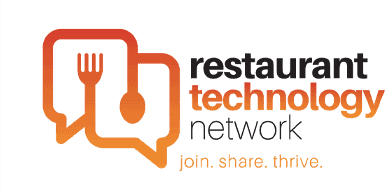One of the first, and possibly most enduring, consequences of the COVID-19 pandemic is significantly increased consumer focus on the issues of sanitation and safety in the restaurant industry.
This, of course, is a primary reason that contactless ordering, mobile menu browsing, and other contactless technologies are being so widely adopted by restaurants across the board.
While diners in the past were mostly secure in the knowledge that local and state health departments were keeping an eye on their favorite eateries, those same diners are much less likely to assume an acceptable level of food safety when they go out (or order in). They’re going to want proof and reassurance.
The National Restaurant Association, in collaboration with safety experts from government organizations, academia, the public health sector, and corporations has released a detailed report offering general guidance to bring operators the most up-to-date guidelines to ensure safety on- and off-premises dining.
Here are some important steps you can take to increase consumer confidence in the safety of patronizing your restaurant in this age of COVID.
These guidelines should be looked at in concert with existing corporate policies, the FDA Food Code, ServSafe training, state COVID-19 regulations, and recommendations from local health officials.
General facts
COVID-19 is known to be transmitted primarily from person to person via droplets produced when an infected individual coughs or sneezes.
While it’s not entirely clear exactly how long the virus can live on surfaces, it is possible that it can be spread by touching a surface that has been recently exposed and then touching your own mouth, nose, or eyes. Of primary concern are hard surfaces. It is not thought that more porous surfaces, such as clothing, are as likely to harbor the virus for any length of time.
Food safety
There is currently no evidence of food being associated with COVID-19 transmission, according to both the CDC and the Food and Drug Administration (FDA).
When it comes to food safety, all the old rules and precautions of the FDA’s “food code” obviously still apply during COVID.
The newer guidelines reiterate things like discarding out-of-date food items, the implementation of sneeze guards, etc. Procedures emphasized by the new guidelines in response to COVID include:
- Prohibiting sick employees in the workplace
- Strict handwashing practices that include how and when to wash hands
- Strong procedures and practices to clean and sanitize surfaces
- Ensuring the person in charge of a food service facility is a certified food safety manager, and is on-site at all times during operating hours
- Stock coolers to no more than minimum levels if providing a “grab-and-go” service.
Follow CDC guidelines as to when ill employees may return to work. As noted above, employees who become ill or present signs of illness should be immediately sent home, and at a minimum, the employee should self-isolate for seven days from the onset of symptoms. Such employees should be symptom-free for three days without medication before returning to work.
The CDC has not mandated taking an employee’s temperature at this time. Any operator who chooses to do so should engage health officials first and adopt policies aligned with proper procedures.
Facility cleaning and sanitizing
In regards to the cleaning and sanitation of the facility in general, the guidelines make a variety of specific recommendations, including:
- Focus on high-contact areas touched by both employees and guests.
- Do not overlook seldom-touched surfaces.
- Follow sanitizing material guidance to ensure it is at effective sanitizing strength, and to protect surfaces.
- Between seatings, clean and sanitize table condiments, digital-ordering devices, self-service areas, tabletops, and common-touch areas.
- Avoid all food contact surfaces when using disinfectants.
- Discard all single-use items. Consider using pre-rolled silverware.
- Remove lemons and unwrapped straws and utensils from self-service drink stations.
- Clean and sanitize reusable menus. If you use paper menus, discard them after each customer uses them.
- Implement procedures to increase how often you clean and sanitize surfaces in the back-of-house.
- Check restrooms regularly, and clean and sanitize them based on the frequency of use.
- Make hand sanitizer readily available to guests. Consider touchless hand sanitizing solutions.
Social distancing
In addition to all of the above, customers and staff should continue to observe the social distancing principles that we’ve all become familiar with since the onset of the virus. Some specific guidelines and suggestions in the Association’s report include:
- Post signage at the entrance stating no one with a fever or symptoms of COVID-19 can enter the restaurant.
- Update floor plans for common dining areas, redesigning seating arrangements to ensure at least six feet of separation between table setups.
- Design a process so guests stay separated while waiting for seating. Don’t allow them to congregate in waiting or bar areas. This process can include floor markings, outdoor distancing, waiting in cars, etc.
- Limit party size at tables to no more than the established “maximums approved” as recommended by CDC or approved by local and state governments.
- Install physical barriers where practical, especially in booth seating sections.
- Consider a reservations-only or call-ahead-seating business model to more effectively space diners.
- Take account service and guest areas into account when establishing social distancing measures based on square footage.
- Remind third-party delivery drivers and any suppliers that you have internal distancing requirements.
- Limit contact between wait staff and guests.
- If practical, physical barriers such as partitions or Plexiglas at registers are acceptable.
- Use technology where possible to reduce person-to-person interaction, including mobile ordering, browsable digital menus, texts on arrival for seating, and contactless payment.
- Determine ingress/egress to and from restrooms to establish paths that mitigate proximity for guests and staff.
- Consider an exit from the facility separate from the entrance.
Increasing customer confidence in your food safety practices will only help your business, both now and once the pandemic has passed. If you’d like to explore contactless ordering and payment solutions, schedule a demo with us today.





